7/29/2025
What Is an Operational Data Platform? Complete Guide
Learn what is an Operational Data Platform (ODP), why it’s critical for real-time decision-making, and how to choose the right solution for your business. A conversational, in-depth guide.
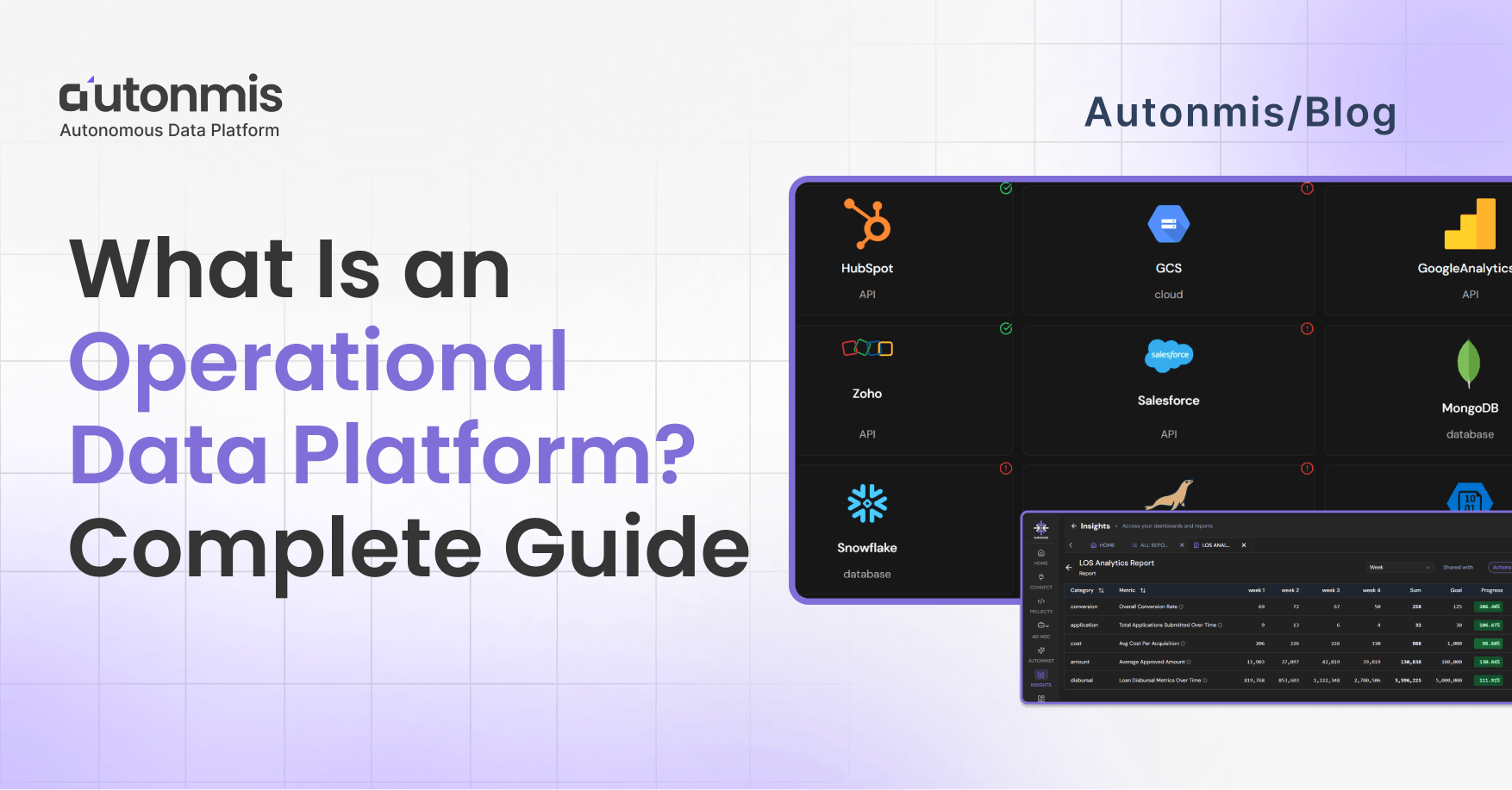
An Operational Data Platform is a tool that grabs all the fast-moving bits of information from your apps and systems, stitches them together into meaningful stories (like user sessions or machine health), and serves up alerts or dashboards the moment something important happens. Think of it as your always-on data buddy that spots issues and opportunities right as they come up, so you can fix problems before they snowball and tune experiences without waiting for tomorrow’s reports.
What Is an Operational Data Platform
At its heart, an Operational Data Platform is a software system built to handle ever-flowing streams of events - clicks, sensor readings, logs and turn them into actionable insights almost instantly. Instead of loading data in big batches overnight, it keeps pace with what your users or machines are doing right now, so you’re never looking at stale numbers.
It usually does four things in a loop:
- Ingests data from all over mobile apps, web services, IoT devices, you name it.
- Processes those raw events into higher-level metrics (think “session length” or “error rate”) as soon as they show up.
- Alerts the team or an automated system when something drifts out of tolerance—no more waiting for dashboards to catch up.
- Archives or hands off older data for deeper analysis later, so you can keep things lean without losing history.
These are all part of strong Operational Data Management, making sure data flows cleanly and is meaningful the moment you need it.
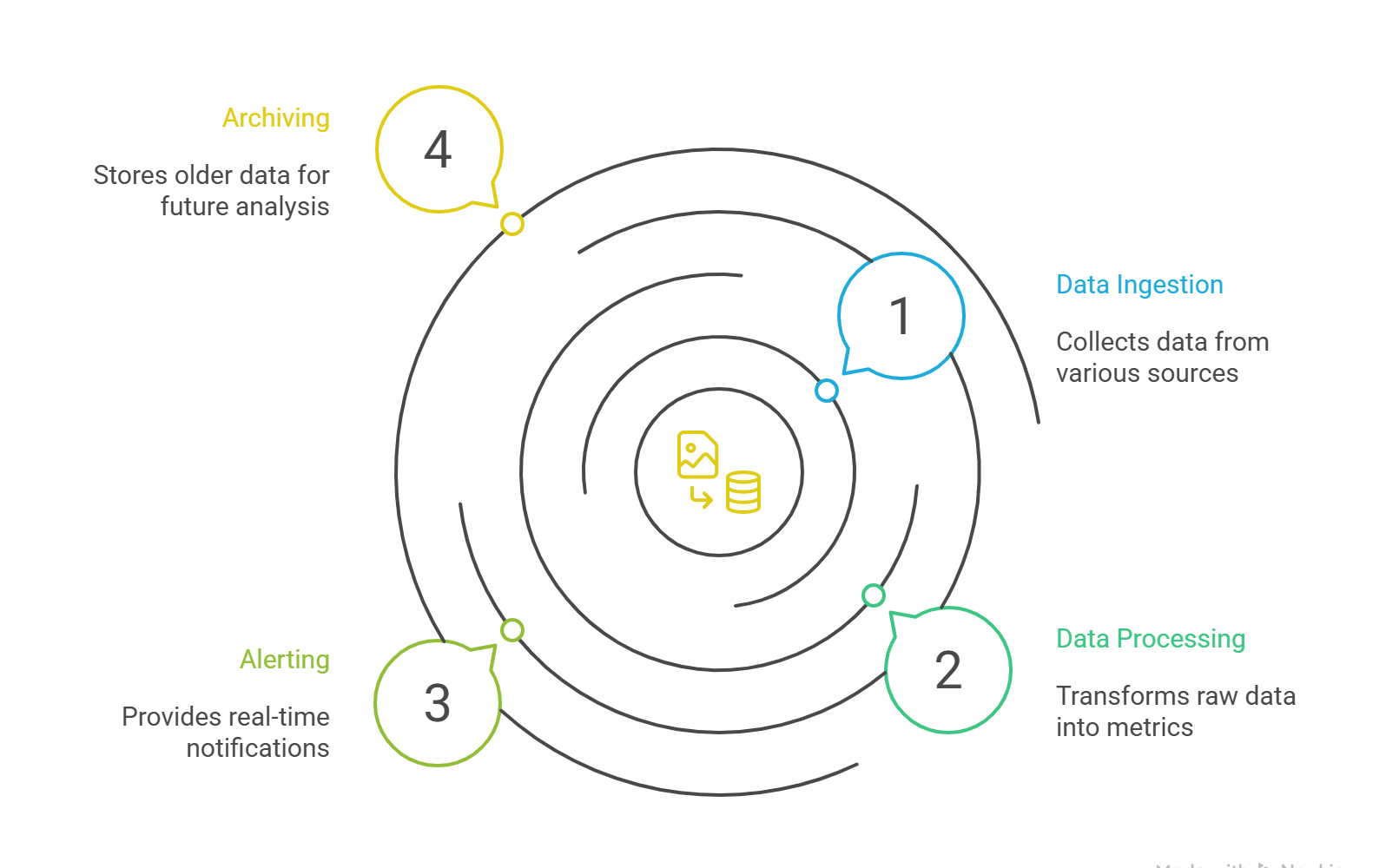
Why You Might Want One
- Faster Fixes: You notice problems the moment they start, not hours later when logs finish loading. That means fewer angry customers and less firefighting.
- Better Experiences: By tying user clicks or machine signals to business outcomes (like conversions or uptime), you can tweak on the fly instead of guessing next week’s priorities.
- Tool Consolidation: One system handles ingestion, metrics, alerts, and dashboards - no more yammering between too many point tools and spreadsheets.
- Early Warning: Spot patterns that hint at bigger issues (like slowdowns or errors) before they hit your SLAs or churn targets.
Key Parts of a Good Operational Data Platform
Every platform has its quirks, but look for these basics:
- Always-On Ingestion: It never sleeps on your streams - every click, every ping, every event matters.
- Session Awareness: It groups events into logical sessions or workflows so you see the full picture, not just isolated spikes in a log file.
- Smart Alerts: Beyond simple thresholds, it learns what “normal” looks like and flags oddities before they become emergencies.
- Query on Demand: You can ask questions - old or new, against fresh data without waiting for a batch job to finish.
- Cost Controls: You choose how long to keep raw events versus summarized snapshots, so you’re not over-paying for elbow-room storage.
All of these features help with effective Operational Data Management - turning raw streams into smart insights.
How It’s Different from Other Data Systems
- Versus Data Warehouses/Stores: Those are great for digging into months of history, but they’re not built for handling the rush of new events by the minute or second.
- Versus Message Queues or Event Buses: Queues move data; Operational Data Platforms make sense of it, turning streams into stories and signals into actions.
- Versus BI Dashboards Alone: Dashboards wait for data to land; an ODP nudges you when something actually moves the needle - no more “Oh, we missed that spike yesterday” moments.
Picking the Right Platform
- Speed vs. Depth: Decide how fresh your insights must be and how deep your drill-downs go. Some platforms favor speed, others pack heavier analytics.
- Scale: Map out your peak load - events per second, number of users and pick a platform that can stretch without breaking the bank.
- Ease of Use: A slick UI and clear docs mean your team spends time solving problems, not wrestling with configs.
- Ecosystem: Check that it plugs into your cloud, your data lake, your alerting tools, no one wants a silo in 2025.
- Price Model: Watch for hidden fees - some charge by data volume, others by query or alert count. Calculate your own usage profile before you pick.
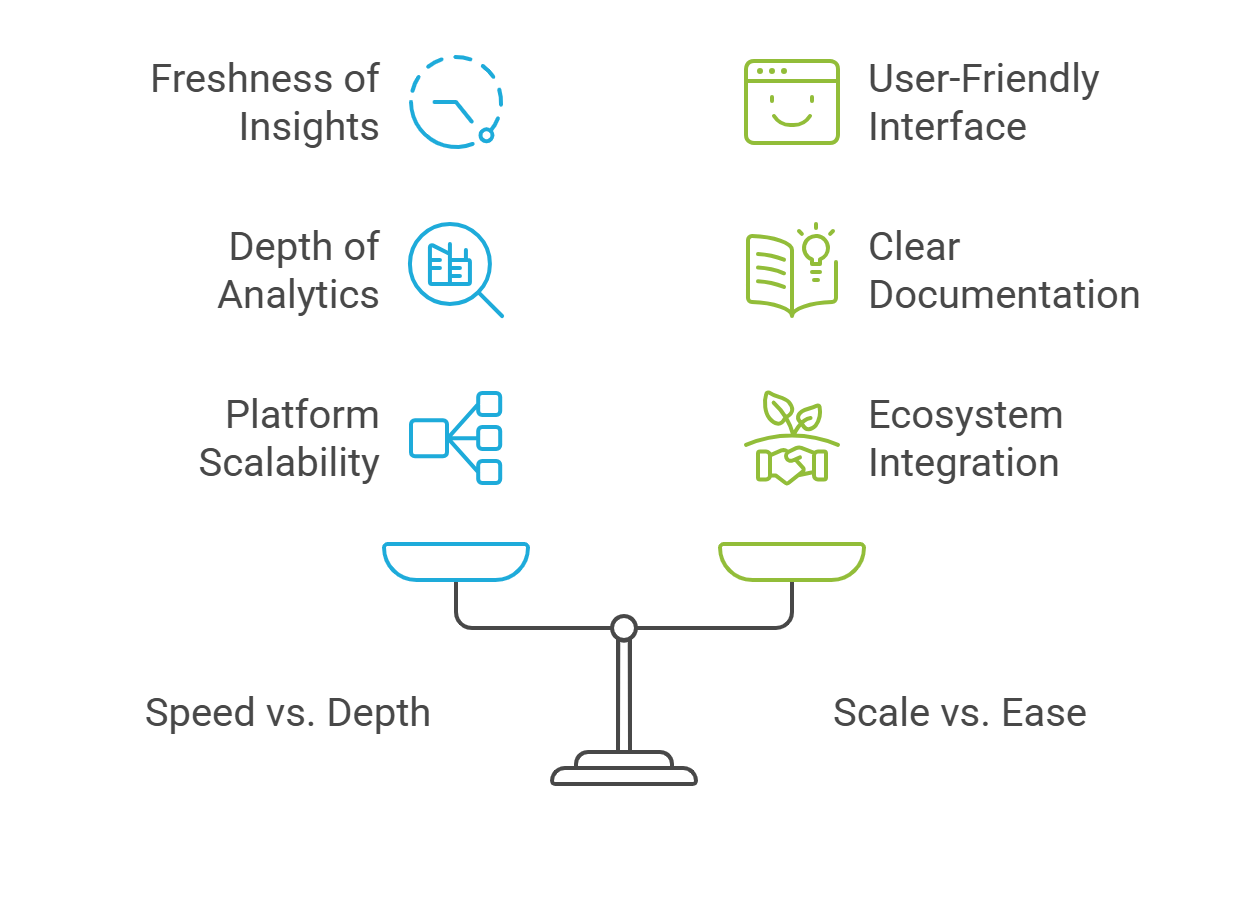
Wrapping Up
If you’ve ever wondered what is an Operational Data Platform, now you know it’s your on-demand insights engine: it watches every event, stitches them into stories, and pings you when those stories matter. No batch-waiting, no guessing games - just straightforward signals that help you keep systems healthy, users happy, and KPIs moving up and to the right.
If you’re tired of chasing yesterday’s data and ready to act as things happen, an Operational Data Platform could be your next best friend. Need help sizing up options or rolling out a pilot?
Recommended Learning Articles
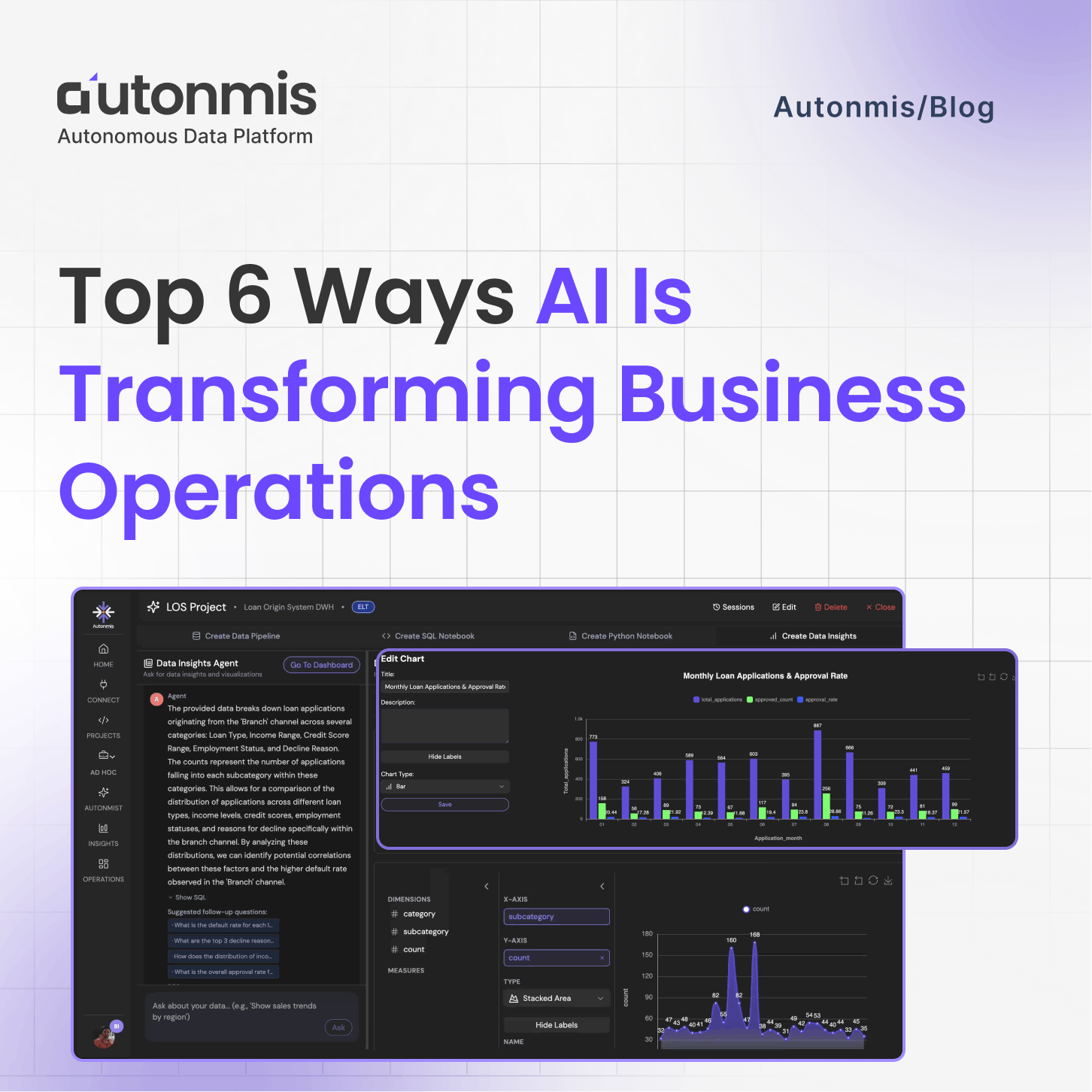
10/23/2025
Top 6 Ways AI Is Transforming Business Operations
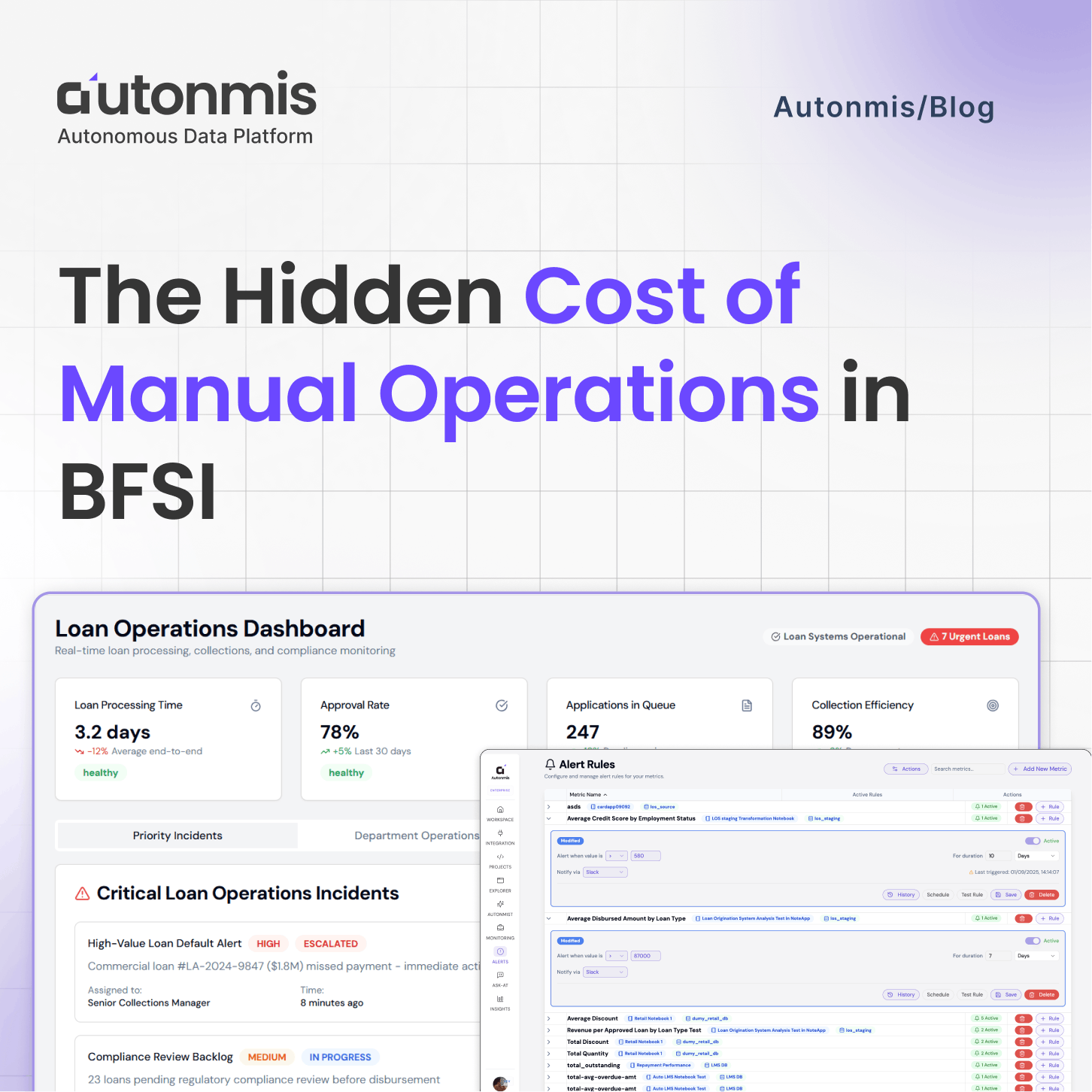
9/22/2025

AB
The Hidden Cost of Manual Operations in BFSI
Actionable Operational Excellence
Autonmis helps modern teams own their entire operations and data workflow — fast, simple, and cost-effective.